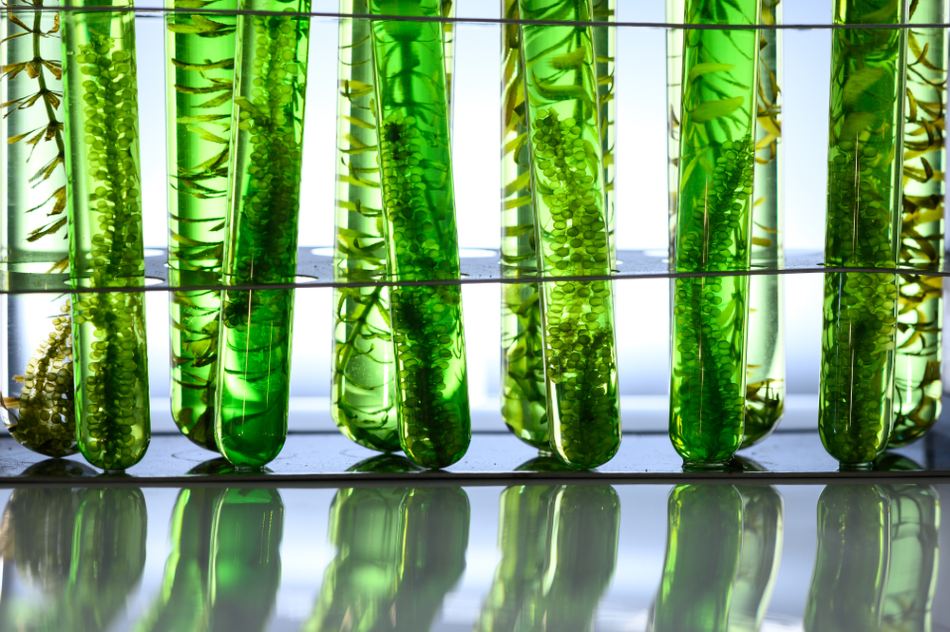Article Updated on 17 March 2021

Image Credit: Chokniti Khongchum/Shutterstock.com
Researchers at the Universiti Brunei Darussalam, Brunei, recently explored the benefits of creating a microalgae-coal blend fuel option, and the team found that the field of renewable energy may benefit from the elemental analysis of algae.
In a study published in 2019 in the journal Renewable Energy, the team outlines how they used elemental analysis, alongside other techniques, to analyze microalgae species from drain water, leading to the optimization of a microalgae-coal blend that may impact the renewable energy industry.
Previous Research Suggests the Benefits of Blending Microalgae with Coal
The energy sector is under a lot of pressure right now to reduce emissions due to their negative impact on the environment.
While coal was once the main generator of energy for the US and other countries, accounting for more than 50% of the US’s electricity between 1981 and 2008, its use as a source of energy is now on the decline. However, it is still contributing to greenhouse gases, fueling climate change, and this must be counteracted.
The benefits of combining algae and coal have been discussed since the beginning of the decade. Algae consumes carbon dioxide (CO2) and has been seen as a solution to the huge amount of emissions that coal-burning releases.
The use of algae also has another significant benefit: when it consumes CO2, it makes fuel. Scientists have considered adding algae into coal-burning methods to reduce emissions and to generate biofuel at the same time.
The process has proven to be difficult, although possible. One of the early projects was a carbon capture project at a coal plant in Australia. Here, microalgae were added into the system to directly capture CO2 coming out of the coal plants. The project showed that the run-off from the process could also be used to make other useful products such as ethanol.
A 2016 study confirmed the benefits of this partnership. A team in Milan integrated algae with a coal-fired power plant and found that in doing so they were not only able to reduce the amount of CO2 being emitted into the air, but they were also able to generate energy from the algae.
However, it was clear that the system needs to be developed to be competitive with traditional technologies. The levelized cost of electricity (LCOE) was recorded as €554.4 ($616) MWh, and the LCOE of coal sits roughly between $55 and $140 Mwh.
Given the success of previous work in this field, the team of researchers in Brunei set about exploring the relationship between algae and coal further. The team wanted to investigate what blend of algae and coal gives optimal energy output following combustion.
The Method
The Brunei team collected Stigonematales sp., a species of microalgae from drain water. The team used scanning electron microscopy to characterize the algae’s morphological edifice, energy dispersive X-ray to determine its elemental composition, a thermogravimetric analyzer to measure its thermal condition, and a bomb calorimeter to record its energy generation capacity.
What the Team Found
The optimal blend was determined to be 75% microalgae and 25% coal, and was found to have an excellent energy content, at 24.59 MJ/kg. Other blends generated lower energy contents. The sample’s moisture content, volatile matter, ash content, and fixed carbon was measured to be 4.5%, 35%, 39.5%, and 21%, respectively.
Future Direction
By using elemental analysis alongside other methods to determine crucial factors of microalgae, the Brunei team managed to optimize a microalgae-coal blend that could be used for large-scale applications. This opens up a new avenue to explore for renewable energy. Governments worldwide are under pressure to cut emissions and so this method could prove useful in helping to meet emissions targets.
References and Further Reading
Giostri, A., Binotti, M. and Macchi, E. (2016). Microalgae cofiring in coal power plants: Innovative system layout and energy analysis. Renewable Energy, 95, pp.449-464. https://www.sciencedirect.com/science/article/abs/pii/S0960148116303147
Hossain, N., Zaini, J., Mahlia, T. and Azad, A. (2019). Elemental, morphological and thermal analysis of mixed microalgae species from drain water. Renewable Energy, 131, pp.617-624. https://www.sciencedirect.com/science/article/abs/pii/S0960148118308796
Disclaimer: The views expressed here are those of the author expressed in their private capacity and do not necessarily represent the views of AZoM.com Limited T/A AZoNetwork the owner and operator of this website. This disclaimer forms part of the Terms and conditions of use of this website.